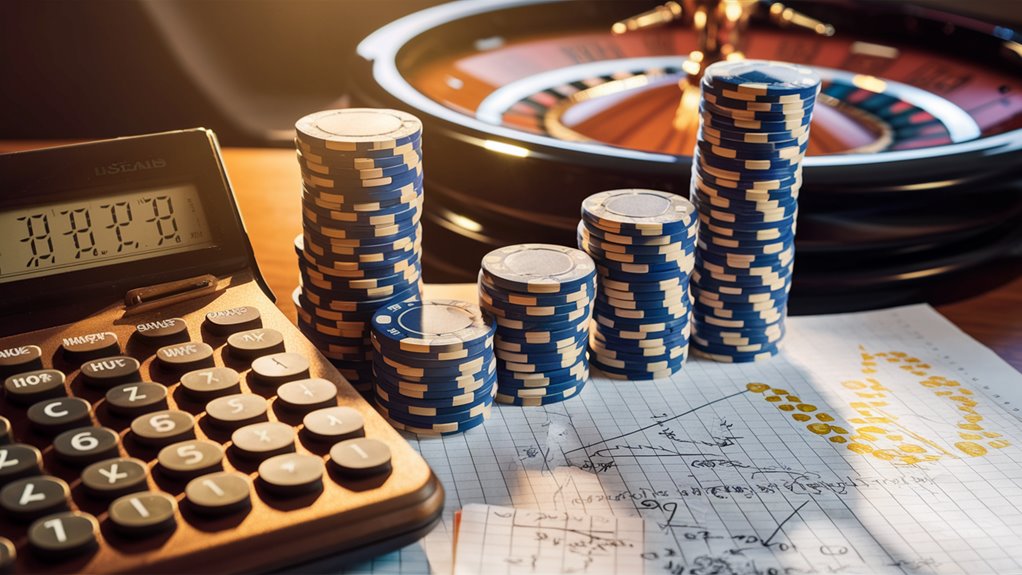How Progressive Jackpots Work: The Math

Progressive jackpot games use strong math to build up and pay out. They use Random Number Generation (RNG) and set math rules for money added.
Main Math Parts
The base of progressive jackpots is a Addictive Than Offline contribution rate of 1-3% from each play, which adds to the main prize. The basic game math gives back 88-92% of money played, and the progressive part adds another 4-8% to what players might get back.
Chance and How Often Wins Happen
Calculated chances decide when jackpots are won:
- Mini jackpots: 0.01% chance (1 in 10,000 spins)
- Major jackpots: 0.001% chance (1 in 100,000 spins)
- Grand jackpots: 0.00001% chance (1 in 10,000,000 spins)
Math Stays the Same Each Spin
Every play is its own event by RNG, making the game fair. The chance rules stay the same no matter the jackpot size, but the prize grows until someone wins. This setup makes the expected value go up as the jackpot grows, while the chance of winning stays set.
How Progressive Jackpots Actually Work
Progressive jackpots use a set math rule and a system where each bet adds a bit to a big prize over time. Each bet adds a set part to the jackpot, usually 1% to 5% of the bet.
How Money Adds Up
The system behind progressive slot machines is simple. For a $1 bet game, a 2% rate means each play adds 2 cents to the jackpot. Each casino sets a minimum start amount, or seed value, that starts the jackpot after a win.
The Math and How Much You Get Back
The return-to-player (RTP) chart for these games mixes two parts:
- Base game RTP
- Progressive money part
A slot machine with a 92% base RTP and 3% for the jackpot would have a total return of 95%. But, this return rate really shows up only when you include jackpot wins. The real RTP can change with how often and how big the jackpot is, making these games a chance but possibly worth it.
Main Parts of Progressive Jackpots
- Seed Amount: The start value of the jackpot
- Contribution Rate: How much of each bet goes to the prize
- Win Rate: How often the jackpot is won
- Network Link: How machines or casinos are connected
- Prize Levels: How wins split
Progressive Jackpot Math

The Core Math Parts
The deep math of progressive jackpot systems works on clear chance math and counting. The key parts set how the prize grows and the win chances through tried math ideas.
The Basic Growth Rule
The key progressive jackpot rule uses three main bits:
- Base Seed Amount (S)
- Contribution Rate (R)
- Time Variable (T)
This makes the key rule: J = S + (W × R × T) where J is the jackpot total and W is total bets. Most new slot machines use a contribution rate from 1% to 3% per bet.
Chance Rules
The jackpot chance rule uses P(JP) = 1/C, with C being all possible combos. A basic five-reel slot with 20 icons each gives chances of 1 in 3.2 million (20^5). These chance ratios stay set no matter how much the jackpot grows.
Expected Value Work
The expected value (EV) rule changes as jackpots get bigger, shown by: EV = (JP × P(JP)) – (1 – P(JP)). This math sets the key level where playing might be worth more by pure chance. Knowing this math gives deep insight into how progressive jackpots work and the best ways to play.
Working Out Win Rates
Slot Machine Win Rates
The Math of Win Rates
Win rate tells the math chance for winning combos in slot play. This key number helps players know their chances over many plays and different prize levels.
Basic Win Rate Work
The simple win rate rule works by dividing total wins by all combos. For one win in a million chances, the win rate is 1/1,000,000 (0.0001%). In simple terms, this lets players work out the average spins between wins.
Progressive Jackpot Win Rates
Working on Various Levels
Progressive slot machines need different win rate math for each level:
- Mini Jackpot: Usually happens at 0.01% (1 in 10,000 spins)
- Grand Jackpot: Much rarer at 0.00001% (1 in 10 million spins)
Deeper Chance Work
While machines show theoretical RTP percentage, the real outcomes depend on complex math. Understanding this helps players make informed decisions when playing.
